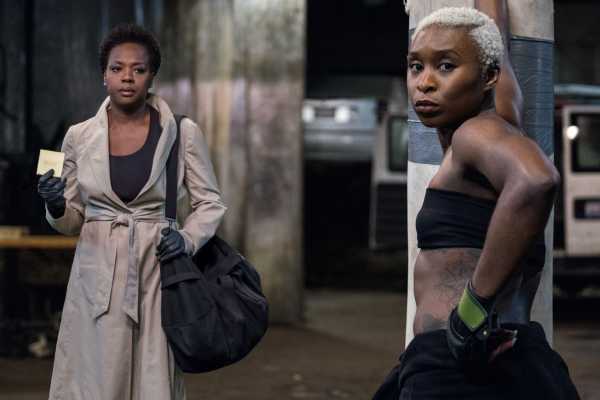
In the annals of bone-headed decisions made by the Academy of Motion Picture Arts and Sciences — the body that presents the annual Academy Awards, a.k.a. the Oscars — the introduction (and subsequent rethinking) of the Popular Film Oscar stands out as a particular debacle.
The organization’s board of directors announced in August that a new Oscar, for achievement in “popular film,” would be awarded at the 2019 ceremony (which will honor the best movies of 2018). It was never precisely clear what the Academy’s aims were, but they seemed to stem from a desire to ensure at least one high-profile nomination for some of the year’s top box-office hits (which sometimes get overlooked in favor of arthouse films).
Related
The Oscars’ new “popular film” category is a bad idea from a panicked organization
But the Academy offered no further context for what such an honor would recognize, or how “popular film” would be defined. Any categorization that pundits could come up with — be it box office earnings or the number of theaters screening a film or something else — just had too many variables to work. And there was a very real fear the Academy would simply and permanently relegate horror, sci-fi, fantasy, action, and comedy films to a category that would quickly be seen as a consolation prize, rather than one of the big awards.
It was a uniquely stupid move and an unforced error, made much worse by the Academy’s inability to answer very basic questions about what the award was intended to be.
Just under a month later, the Academy killed the idea, saying it wouldn’t be implemented for the 2019 Oscars. Maybe it will be resurrected for the 2020 Oscars or beyond — but this initial delay feels a little like raising a white flag to admit that defining “popular film” is harder than it seems.
Related
Forget Best Popular Film. Here are 6 new categories the Oscars actually need.
And yet the desire for the Oscars to recognize movies that are popular with critics and audiences remains a worthy goal, especially in an era when the divide between the superhero movies that regularly rule the box office charts and the smaller, more intimate movies that tend to win Oscars seems wider than ever.
But don’t look now, because the 2019 Oscars look as though they might include the Best Popular Film category after all — it’ll just be called Best Picture.
The 2019 Best Picture race could include several big, crowd-pleasing hits — and perhaps the first superhero movie ever nominated in the category

It’s a fool’s errand to predict the Oscars with any degree of accuracy this far out. The field of movies that could be recognized is still very, very broad, even if it’s starting to narrow to somewhere between 10 and 15 titles that have garnered good reviews and some degree of industry acclaim without also completely falling apart at the box office. (Which is to say — they made a respectable amount of money for their budget level.)
But what’s fascinating about the 2019 Best Picture race is how many of the legitimate contenders look to not just be hits but sizable hits, movies that scored big with audiences and also garnered very good-to-terrific reviews. They aren’t just movies that made back their money at the box office; they’re bonafide smash hits.
Take the example of A Star Is Born, Bradley Cooper’s spin on the venerable story of a man on the downward slope of stardom falling in love with a woman ascending to its stratosphere. It’s a movie essentially everybody agrees will do quite well with the Oscars and almost certainly a future Best Picture nominee. It has substantial critical acclaim, but perhaps even more importantly, it’s a movie aimed at adults that has actually gotten said adults into movie theaters.
A Star Is Born has made $191 million at the domestic box office and $356 million worldwide at the time of this writing, with even more money in its future. Even more importantly, its drops from weekend to weekend — which indicate how strong the movie’s “legs” are and how good its word of mouth has been — have been lower than 50 percent every weekend since its release, and lower than 30 percent for many of those weekends.
And the movie’s multiplier — the number of times it has made its opening weekend box office over again — already sits at a 4.4, in an industry where a 3 is considered exceptional. And that’s with, conservatively, another three months left in its theatrical run, making it conceivable that the multiplier could end up nudging a 6 or even a 7. These are, to put it mildly, very good numbers.
But even beyond A Star Is Born, the number of big hits competing for Best Picture nominations is notable. Marvel’s Black Panther — which would be the first superhero movie ever nominated in the category — is mounting an all-out campaign for a nod, with industry screenings designed explicitly to push the movie’s social commentary angle, while also acknowledging its sheer entertainment value as a popcorn film and its status as the biggest hit of the year at the domestic box office. (It’s at $700 million in the US and Canada, and its multiplier ended up just under 3.5.)
Related
The case for Black Panther as a 2019 Oscar behemoth
Then there’s A Quiet Place, which scored $188 million domestically and $340 worldwide. As a horror movie with less impeccable reviews than Black Panther or A Star Is Born, it’s a more marginal Oscar player. But that hasn’t stopped its studio, Paramount (which, to be fair, has no other realistic contenders to push), from mounting a major campaign to earn it some nominations anyway. Will those efforts result in a Best Picture nod? I’d still bill the movie’s chances as a long shot — but the campaign should push it through in several other categories where it deserves recognition, notably those for sound design and sound editing.
And finally there’s a big hit in waiting — Disney’s Mary Poppins Returns, which opens over Christmas and looks likely to make a sizable amount of money. Reactions to screenings of the movie for members of various industry guilds whom I’ve talked to were rapturous (though reactions to the film from critics I’ve talked to have been more mixed), and Variety Oscar expert Kris Tapley is predicting it for Best Picture with a suite of other nominations.
The first Mary Poppins was an Oscar darling, as was director Rob Marshall’s 2002 Best Picture winner Chicago. But perhaps even more importantly, both of those movies made lots of money — and the new Mary Poppins should too.
And even beyond that, there are other Best Picture contenders that could very well make a fair amount of money, like Adam McKay’s Dick Cheney biopic Vice (arriving at Christmas) and the currently running Green Book. Neither movie will make Black Panther amounts of money. (And at present, Green Book is struggling just a bit at the box office, though its second weekend take suggests it has good word of mouth.) But with lower production budgets, neither has to.
No matter what happens, if even just two of the movies I’ve discussed above draw Best Picture nominations, the 2019 Oscars should mark the best overall box office for the awards in years. That will be especially true if Black Panther — whose $700.5 million domestic total just slightly edges out the $700.4 million made by all nine Best Picture nominees for 2016 combined — manages a nomination. But it will be just as true if A Star Is Born and Mary Poppins manage the trick.
And even more importantly, these possible nominees run the gamut from superhero movies to horror movies to musicals. That they are all in real contention for a Best Picture nod is a display of Hollywood’s ability to still make quality films in a wide variety of genres.
Still, how did this happen? How did Best Picture just become the Popular Film category anyway?
A lot of presumed indie movie Oscar contenders have unexpectedly struggled

Despite the conventional wisdom that there’s a wide gap between the movies people actually see and the movies that win Best Picture (with occasional exceptions), it’s actually pretty rare for an outright flop to win. Last year’s winner, The Shape of Water, wasn’t one of the biggest hits of 2017, but its $64 million domestic and $195 million worldwide earnings, while modest, easily made back its $20 million budget. Couple that with the movie’s great reviews and you had an unlikely Oscar favorite.
But even movies with tiny budgets have to perform well enough at the box office to drive the perception of being a hit. For instance, 2016 winner Moonlight made just under $28 million domestically and just over $65 million worldwide, but both those numbers more than covered its $4 million production budget, and the movie entered the cultural zeitgeist in a way that few would have expected for a small coming of age story.
What’s different in 2018 is that most of the smaller Oscar contenders — and even some of the bigger ones — have found tough rows to hoe at the box office. The heist movie Widows is my favorite film of the year and boasts terrific reviews, but it’s going to struggle to make back its $42 million budget, much less double or triple it (which is basically required to turn a profit, once advertising costs and the cut theaters take are factored in). Similarly, the Neil Armstrong biopic First Man cost $59 million to make but could only manage $44 million at the box office in the US and Canada.
These films were considered easy Best Picture nominees by many predictors after the early fall film festivals where they made their debuts. But now, while either getting nominated won’t be a surprise, they’ll have a much harder time doing so, thanks to the perception that they were box office flops.
This predicament affects much smaller movies, too. The indies Beautiful Boy, Boy Erased, and Can You Ever Forgive Me? all seemed like possible Oscar players, but all are struggling to make it to $10 million in the US and Canada. And both Beautiful Boy and Boy Erased also struggled with reviews, with neither cracking a 75 on Metacritic. (Although Can You Ever Forgive Me? fared better by this metric, scoring an 87, so I’d wager it still has an outside shot at a Best Picture nomination. The people who love it love it, which helps during Oscar season.)
What’s more, another major contender, Netflix’s Roma, won’t report its box office at all, thanks to its distribution by the streaming giant, which doesn’t even report box office totals from the theatrical screenings it’s booked as an attempt to appease Academy folks who desperately want the film experience to remain a theatrical one.
With many smaller movies struggling, in one way or another, with both critics and audiences, the floor is clear to consider slightly more idiosyncratic Best Picture picks — like, say, Black Panther. And with a rapidly diversifying Academy membership that’s less beholden to what a Best Picture nominee “should” look like, those more idiosyncratic picks have an easier road ahead of them than ever before, at least if they play their cards right.
Now, obviously, all of this could end up being wrong. Maybe we’ll wake up on Oscar nomination morning in January and wonder how the hell the Academy managed to only nominate movies that brought in less than $30 million, when movies like A Star Is Born and Black Panther were sitting right there. But I don’t think that scenario is terribly likely. Instead, the year of the Popular FIlm debacle has, perhaps accidentally, also become the year where the Oscars’ taste just might line up with that of the filmgoing public.
Sourse: breakingnews.ie
0.00 (0%) 0 votes


































